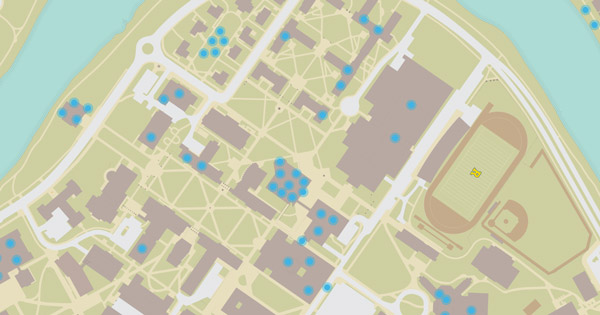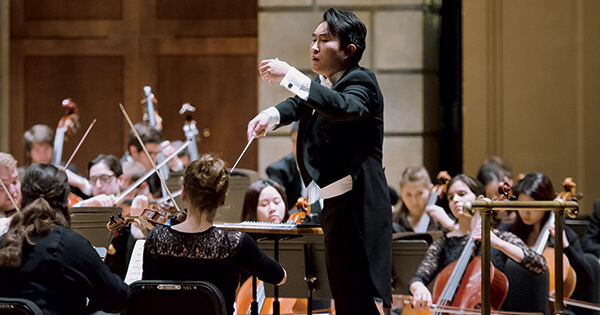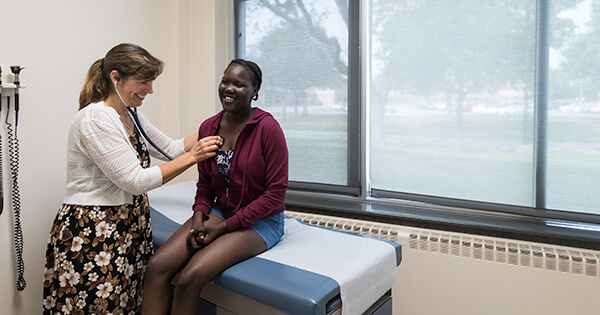Laboratory for Laser Energetics
Laboratory for Laser Energetics to receive highest level of federal funding to date
After great uncertainty this past year about federal support for the University’s Laboratory for Laser Energetics (LLE), the final FY 2019 Energy and Water bill that was just passed by the U.S. Congress includes $80 million for the LLE, a $5 million increase over FY 2018 and the highest level of federal funding ever appropriated to the LLE in the University’s history.
The President is expected to sign this bill into law shortly, which also includes $545 million for the Inertial Confinement Fusion (ICF) program at the National Nuclear Security Administration. The ICF program supports three major, world-leading research facilities: the National Ignition Facility at Lawrence Livermore National Laboratory, the Z Facility at Sandia National Laboratory and the OMEGA Laser Facility at the LLE. About 80 percent of ICF’s experiments are conducted at the LLE. In addition, the LLE is the National Nuclear Security Administration’s largest university program, providing a critical scientific pipeline.
This past February, the Trump Administration proposed a $30 million cut to the LLE, a $126 million cut to the ICF program, and closing the LLE in three years. However, thanks to strong, bipartisan Congressional support led by Sen. Charles Schumer, Sen. Kirsten Gillibrand and members of the House delegation, as well as outcry from the scientific community, these devastating cuts and proposal to shutter the LLE were reversed.
President Feldman issued the following statement as part of the recent announcement from senators Schumer and Gillibrand:
“On behalf of the University of Rochester and the 500 scientists, engineers, staff, and students at the Laboratory for Laser Energetics, I want to extend my sincere gratitude to Senator Schumer and Senator Gillibrand and the members of the New York State delegation in the House of Representatives for rejecting the proposed cut and closure of this state-of-the art-facility.This was a seminal moment in the 48-year history of the LLE and it is thanks to their leadership and strong, bipartisan support from Congress, that the LLE will continue to make significant contributions to the advancement of science, help enhance our national security and maintain our global competitiveness, and drive economic growth and technological innovation across New York State. With this funding, I am proud to say that the LLE will continue to serve as the largest university-based U.S. Department of Energy program in the nation and home to the largest and most powerful laser systems found at any academic institution in the entire world.”
The increased funding will serve as a critical basis for the first year of a new, five-year Cooperative Agreement between the LLE and the U.S. Department of Energy. The LLE is home to the DOE’s National Laser Users’ Facility, which brings scientists from across the country and the world to Rochester to use its facility. The LLE is also critical to maintaining the U.S. position in laser technology by increasing our scientific knowledge key to industrial progress and to non-nuclear defense applications. The LLE is also a recognized center for high-power lasers that have major impacts for national security, science, and advanced manufacturing.
As a result of federal and state support, the LLE has attracted more than $2.3 billion to the state since its inception to support cutting-edge research, jobs for the region’s optics, photonics and imaging industry and the creation of new companies. Since 2015 alone, the LLE has made more than $15.6 million in local purchases from over 50 companies across New York State. The spending of the LLE and its employees contributes to an additional 500 jobs for a total impact of about 850 jobs across the region, over $56 million of income to workers, and $3.7 million in revenue to state and local governments.
Below are some reactions from the elected officials who advocated for the LLE’s funding over the past seven months:
“This significant funding increase for the vital U of R Laser Lab reverses the administration’s misguided proposal to defund it and eliminate over 300 high-tech Rochester jobs. I, along with my colleagues in Congress, have now twice rejected that proposal and instead have appropriated back-to-back years of funding increases to keep the Lab’s doors open and its workers on the job. Securing this $80 million represents a two-year, $12 million increase to ensure that 340 Rochester workers can now stay on the job at the Laser Lab, keeping our nuclear weapon stockpile safe and reliable while pushing the frontiers of energy research at a time when countries like China and Russia are working to beat the U.S. to new technological advances.”
—U.S. Senate Minority Leader Charles Schumer
“This funding for the Rochester Laser Lab is outstanding news for Rochester and the surrounding community, especially for the 340 workers whose jobs are now safe. The Rochester Laser Lab is one of our nation’s vitally important scientific research labs, and it would have been a huge mistake to close it down. I was proud to fight to ensure that the Rochester Laser Lab will stay open with even higher funding than it had in the past, and I will always do everything I can to make sure that Rochester and the rest of New York State’s cutting-edge research institutions are able to keep doing their important work for our country.”
—U.S. Senator Kirsten Gillibrand
“We recognize how critical the OMEGA Laser Facility is for our nation’s nuclear research. We care about ensuring their program was fully funded at a fair level consistent with their proposed Cooperative Agreement with the National Nuclear Security Administration and are proud to announce this accomplishment.”
—U.S. Representative Tom Reed (NY-23)
“I’m proud to offer my continued support for the University of Rochester’s Laboratory for Laser Energetics program. As a member of the House Homeland Security Committee, I’ve worked to combat the ever-evolving global threats we face, and recognize the importance of training our nation’s next generation of scientists and engineers as we prioritize our national security. This program is a strong example of public private collaboration.”
—U.S. Representative John Katko (NY-24)
“In Upstate New York, we work together to help one another out. After my dear friend, Louise Slaughter, passed away, I committed from my role as a New York member of the House Science, Space and Technology to ensure LLE had the necessary funding to continue its important mission of research and education in science and technology. Despite attempts by the President to drastically slash funding, we secured a bipartisan win to increase funding in recognition of the important work done at LLE to bolster our national security, create economic opportunities and keep Americans safe.”
—Congressman Paul Tonko (NY-20)





